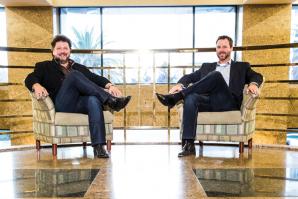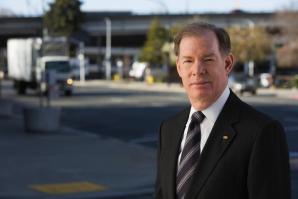Existing business expansion is the single biggest source of job creation in the United States, accounting for nearly two-thirds of new jobs nationally, according to the Bureau of Labor Statistics. That’s why the Sacramento Metropolitan Chamber of Commerce is bolstering small businesses by kicking off a one-stop shop for regional employers looking to grow and expand.
In September, the Metro Chamber acquired the contract to manage a federal Small Business Development Center in the Capital Region. The SBDC will be centralized in Sacramento with subregional hubs in Yolo, El Dorado, Yuba, Placer, Sutter, Lake and Colusa counties.
The eight offices will offer workshops, counseling, training and funding opportunities for small businesses throughout the region at no cost to employers.
The goal? To make the Sacramento marketplace thee place to be for business in California, says Metro Chamber Executive Vice President David Butler.
“If you made a decision to be in California, we want you to come here or stay here and grow here,” says Butler, who helped acquire the federal grant for the SBDC.
The Metro Chamber has long sought to create a business-friendly climate on a policy and advocacy level — partnerships of local chambers of commerce in the Sacramento Business Coalition and the Capital Region Business Coalition consistently push policies benefitting business at local, state and federal levels.
But that is just one point of attack, and Butler says it’s “not enough.”
In terms of overall economic development for the Sacramento region, business expansion and retention — compared with business recruitment from out-of-state and new business creation — accounts for about 60 percent of jobs in the market.
“If you have your own business, most of your new billings are going to come from your existing customers — the people with whom you already have a relationship,” Butler explains. “It’s the same thing in economic development: Most of your job creation is going to come from the businesses that are already here.”
The centers are primarily geared toward connecting existing small businesses with capital through Small Business Administration loans or other lending connections. If an employer does not yet qualify for funding, counselors train and coach them up until they do, free of charge.
Statewide, these centers have been a success: In 2012, more than 62,000 business owners sought out California SBDC consultants and trainers, and small firms across the state secured over $382 million to fuel growth and expansion, according to Small Business Development Centers of California.
But the Cap Region SBDC will be unusual in that it will span eight counties, each with distinct economic needs that the Metro Chamber is in the process of identifying, Butler says. Yolo County, for example, may want to prioritize agriculture or bioscience ventures, whereas Yuba County may favor more mom-and-pop, “main street” type enterprises.
Because of the broad scope and diversity of the Capital Region, it is essential to have a varied pool of counsellors, trainers and experts to work one-on-one with different employers, and a number of local entities are already on board.
The Service Corps of Retired Executives (SCORE) and the Folsom Economic Development Corporation (FEDCorp) are both providing experts to the SBDC counseling network, some of whom are retired execs who have “been there, done that.”
Sacramento State’s College of Business Administration is contributing faculty who are former business owners. Faculty from local community colleges and William Jessup University are in the fold, though talks are still preliminary.
While the ultimate goal of SBDC is to connect employers with potential sources of funding, the centers also provide expertise and advice on a host of minute and often overlooked details that go into running a successful business.
Growing businesses looking to attract new customers understandably tend to focus the majority of their efforts on marketing. But SBDC counsellors also provide guidance on the “nuts and bolts” of running a company — how to manage accounts receivable, choosing the right accounting software — that are sometimes neglected but key to maximizing business already in place.
“(Employers) want more business, but what we also need to give them are their vitamins,” Butler says, “ the resources and training they need to manage their existing book of business more effectively and efficiently.”
The Capital Region SBDC is working with PG&E and SMUD to educate businesses and address energy-related issues, such as scheduling energy audits and reducing energy costs to meet new standards. The center will also work directly with local governments to meet municipal regulations and requirements that are involved in operating a business.
The Metro Chamber still needs to secure its staff and pool of experts, finalize its plan among the eight hubs, put marketing and communications in place, and then schedule workshops before it can “open the doors and let it go” by early 2015, Butler says.
But the widespread efforts by local governments and chambers of commerce, as well as local small business associations and universities, send a clear message to current and prospective businesses in California:
Northern California is the place to be, and we want you here.
Recommended For You

Kish Rajan Means Business
The GO-Biz director says he will ensure tax credits for businesses lead to more jobs
A report recently released in New Jersey shows that, of the $4 billion in tax credits the Garden State has given to companies since 2010, a whopping 43 percent have been for jobs that already exist. Kish Rajan, director of the Governor’s Office of Business and Economic Development,says that is definitely not going to happen in California

Help at the Top
Local nonprofit Sacramento Entrepreneur's Organization gives local business a leg up
Every entrepreneur knows that it’s lonely at the top. Jeff Smith is no exception.

Avoid the Post-15 Flop
Turn your business’ 15 minutes of fame into long-term success
It may seem that landing that New York Times interview, getting featured on the front page of AOL or winning a $135,000 business contest means that, as a business owner, you are set for life. In truth, it’s just the beginning.

Active Recruitment
Sacramento needs to attract Fortune 500 companies
As Sacramento gears up to expend precious capital on a new sports and entertainment complex that will bring jobs, outside investment and prestige to the region, I can’t help but ask about other key ingredients needed to guarantee Sacramento a successful future.



